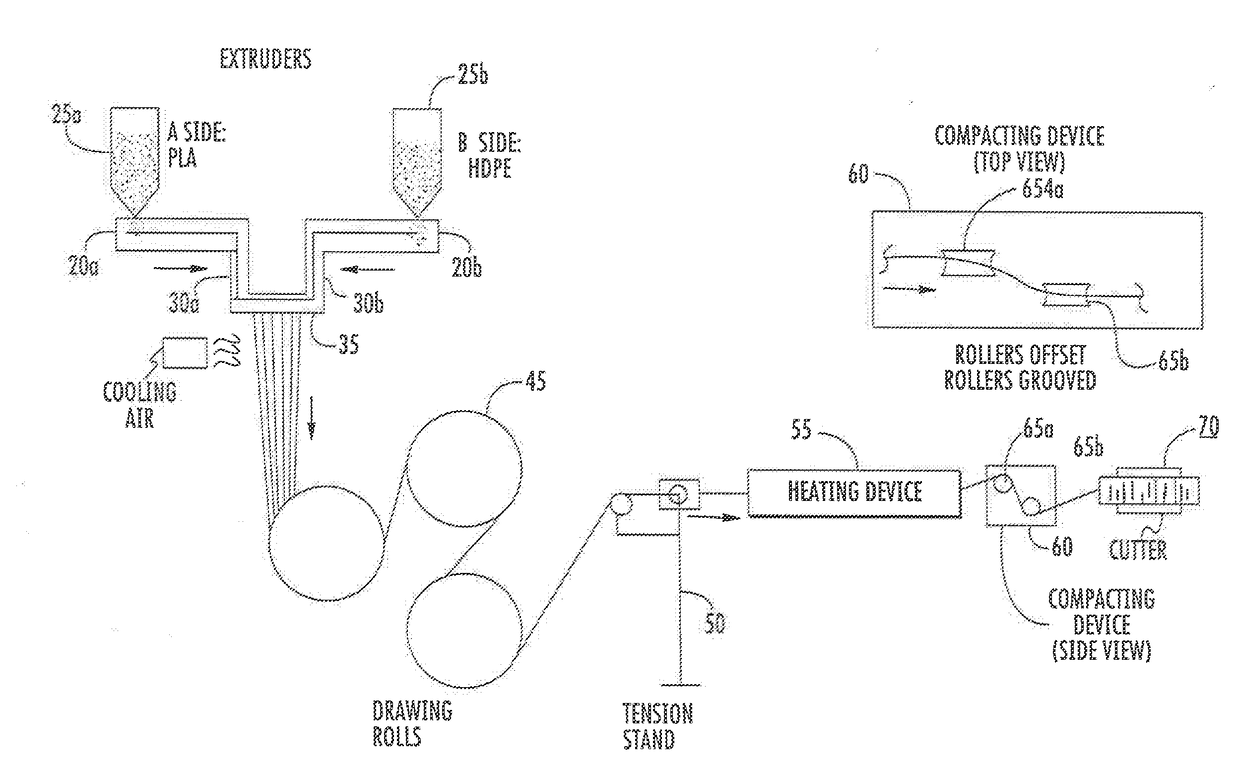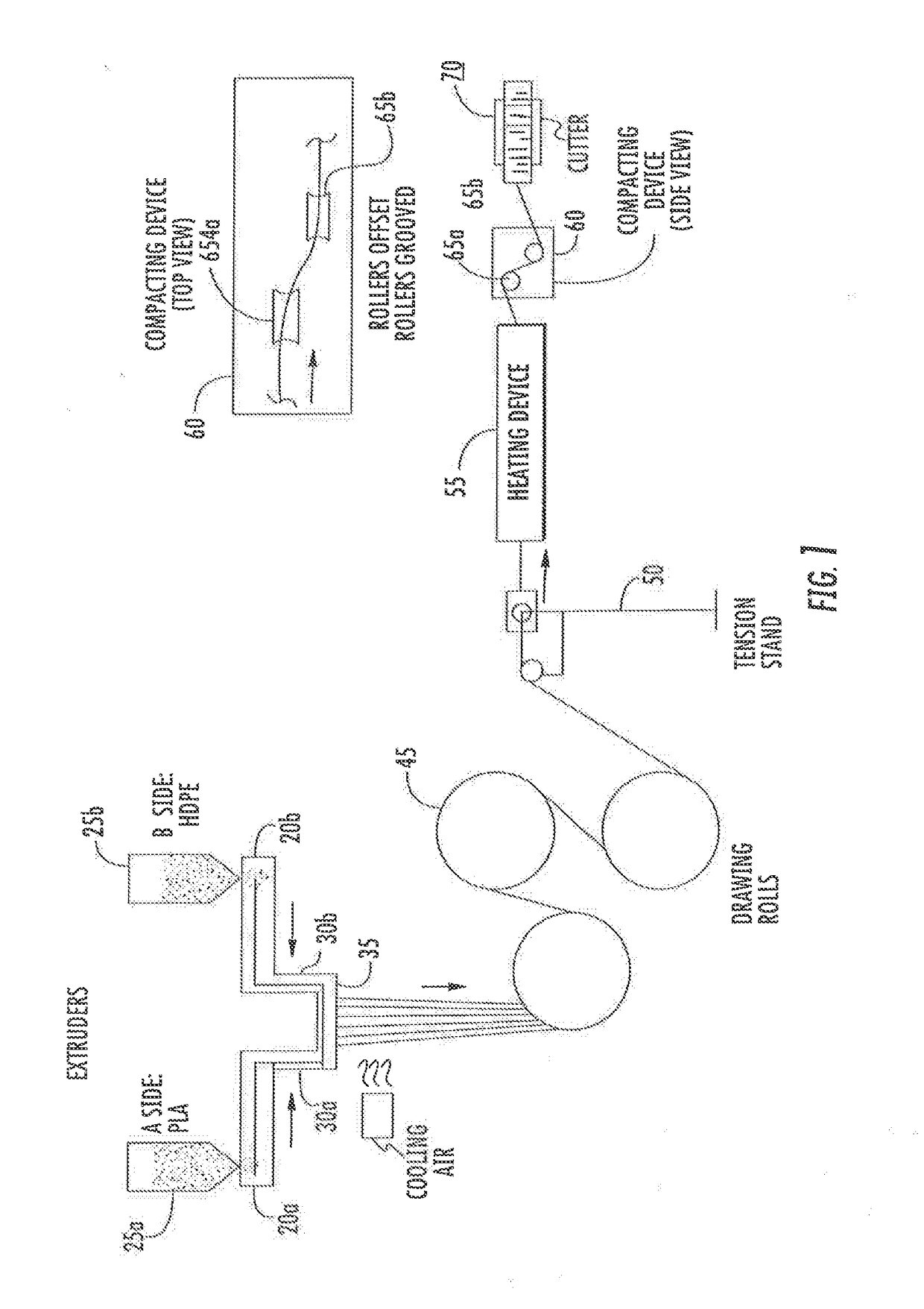Bicomponent fiber additive delivery composition
a technology of fiber additives and fibers, applied in the field of fiber additive delivery compositions, can solve the problems of difficult coloration, difficult to incorporate such additives into the polymer composition, and limited color choices
- Summary
- Abstract
- Description
- Claims
- Application Information
AI Technical Summary
Benefits of technology
Problems solved by technology
Method used
Image
Examples
example 1 (
White)
[0036]A splittable segmented pie bicomponent microfiber was spun at 2000 m / min on a Hills Spin Line. The sea component comprised 40 percent bioHDPE and the island component comprised 53 percent bioPET and 7 percent Snow White colorant available from Universal Colors.
example 2 (
Amber)
[0037]A splittable segmented pie bicomponent microfiber was spun at 2000 m / min on a Hills Spin Line. The sea component comprised 40 percent 7001D PLA and the island component comprised 57 percent stereocomplex PLA and 3 percent transparent amber available from PolyOne.
example 3
[0038]A splittable segmented pie bicomponent microfiber was spun at 2000 m / min on a Hills Spin Line. The sea component comprised 50 percent HDPE and the island component comprised 49 percent PLLA / PDLA 50 / 50 blend and 1 percent TiO2 with the components bonded together. This was added at a 5 percent level to a base polymer comprising Corbion PLLA L130 and formed into film to measure gloss, brightness and opacity.
PUM
| Property | Measurement | Unit |
|---|---|---|
| melt temperature | aaaaa | aaaaa |
| melt temperature | aaaaa | aaaaa |
| melt temperature | aaaaa | aaaaa |
Abstract
Description
Claims
Application Information
 Login to View More
Login to View More - R&D
- Intellectual Property
- Life Sciences
- Materials
- Tech Scout
- Unparalleled Data Quality
- Higher Quality Content
- 60% Fewer Hallucinations
Browse by: Latest US Patents, China's latest patents, Technical Efficacy Thesaurus, Application Domain, Technology Topic, Popular Technical Reports.
© 2025 PatSnap. All rights reserved.Legal|Privacy policy|Modern Slavery Act Transparency Statement|Sitemap|About US| Contact US: help@patsnap.com


